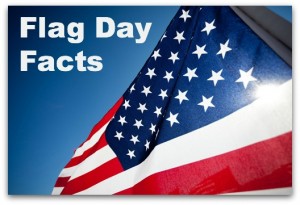Say that three times fast, and then read these flag facts before Flag Day on June 14th.
 Remember that line in “The Star Spangled Banner” that remarks that the “flag was still there,” meaning the U.S. flag survived the battlefield? Well, in real life, the flag that inspired that line is “still there.” Francis Scott Key wrote the song about the flag that flew over Fort McHenry during the War of 1812. A few swaths of the 15-star, 15-bar flag are on display at the Smithsonian.
Remember that line in “The Star Spangled Banner” that remarks that the “flag was still there,” meaning the U.S. flag survived the battlefield? Well, in real life, the flag that inspired that line is “still there.” Francis Scott Key wrote the song about the flag that flew over Fort McHenry during the War of 1812. A few swaths of the 15-star, 15-bar flag are on display at the Smithsonian.
- That entire flag doesn’t remain intact. Not because of damage sustained during war, or natural degradation over the last 200 years. No, the Ft. McHenry flag was a victim of “souveniring,” a 19th century practice in which flags that flew over historical moments were cut up and sold off. (A more recent example of this: chunks of the fallen Berlin Wall were sold in gift shops around the world well into the 1990s.) A 2-by-5-inch piece of this flag of flags was sold at auction in 2011 for $38,000.
- Official Pantone colors for the red and blue on the flag: 193C and 281C, respectively.
- As a national holiday, Flag Day isn’t even 70 years old. President Wilson issued a presidential proclamation calling for the holiday in 1916, but Congress didn’t pass legislation until 1949. Who thought up Flag Day? A Wisconsin teacher named Bernard Cigrand started a drive for a day to honor the nation’s flag in 1885.
- Flag Day is a nationally recognized holiday, but it isn’t “observed”—meaning you still have to go to work. Unless you live in Pennsylvania. It’s a legal state holiday there, as that’s where lore says Betsy Ross supposedly sewed the original flag (although she probably didn’t).
- After a 48-star flag flew for more than 40 years, Alaska and Hawaii became the 49th and 50th states in 1959, necessitating a new flag. The federal government received thousands of suggestions for new flag designs to accommodate the two stars, many of them from school kids as part of a homework assignment. Seventeen-year-old Robert Heft of Lancaster, Ohio, got a B-minus on his flag design, but sent it to President Eisenhower anyway. And it was his design that got chosen and adorns the flag today.







